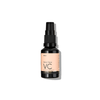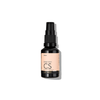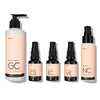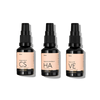The Essential 5-Step Glow-Up Routine for Perfect Skin
Having radiant perfect skin is not all about genetics; the foundation lies in keeping a regular and effective skincare routine for your skin type. With the right products for your skin care, you can take your skin to a whole new level and give your skin that coveted glow-up. In this post, we take you through an essential 5-step routine that you need to help uncover the secret to perfect skin.
Step 1: Cleansing – The Foundation of Great Skin
A good skin care routine always starts with a clean slate. Cleansing forms the very first and most primary basis of skin care to attain healthy skin. It removes dirt, oil, makeup, and other impurities that can block pores and cause different types of breakouts. The key is finding a cleanser that works for your skin type.
Choosing the Right Cleanser:
For Oily Skin: A foaming or gel-based cleanser is important; one that will help reduce excess oil without stripping your skin of essential moisture. Look for salicylic acid or tea tree oil.
Dry Skin: A hydrating cleanser in a creamy or milky consistency is what this skin type needs. Hyaluronic acid or glycerin is one of the components that will help lock in moisture.
For Sensitive Skin: Cleanser should be mild and unscented, and with soothing ingredients such as chamomile or aloe vera.
How to Cleanse
Wet your face with warm water.
Apply your cleanser in gentle circular motions, ensuring your entire face is covered.
Rinse thoroughly and pat your face with a clean towel. Be careful not to rub as this will irritate your skin.
Cleansing provides a basic foundation for your following skincare steps by helping the following products get under your skin more effectively.
Step 2: Exfoliation – Reveal Your Skin Glow
The process deals with the removal of dead cells from your skin's surface. This step is crucial in maintaining smooth, glowing skin by reducing pores and allowing skin cell renewal.
Type of Exfoliants:
Physical Exfoliants: Basically, these types contain some kind of small, gritty particles or grains that will physically scrub off dead skin cells. An example is a sugar scrub and an exfoliating brush. Still, they may be harsh on some types of sensitive skin, so caution should be expressed.
Chemical Exfoliants: These are chemical exfoliants that employ acids, such as alpha hydroxy acids and beta hydroxy acids, to dissolve dead skin cells. They tend to be milder yet more effective than physical exfoliants, and they can work well with practically any skin type.
How to Exfoliate
Choose an exfoliant for your skin type. Once or twice a week, apply to see how your skin survives against the exfoliant. Do not be harsh; this can irritate and potentially damage your skin barrier through over-exfoliating.
Regular exfoliation will make your skin much brighter and fresher, allowing other skin care products to be better absorbed.
Step 3: Toning-Balance and Prep Your Skin
After cleansing and exfoliation, your skin should be rebalanced. This is the work of toners. Toners are involved in restoring the natural pH balance of the skin, clearing off residual impurities from your skin, and preparing it for subsequent skincare procedures.
Picking the Perfect Toner
If You Have Oily Skin: You might want to buy a toner that contains witch hazel or niacinamide, since it claims to reduce pores and regulate oil secretion.
If You Have Dry Skin: Buy a moisturising toner that contains hyaluronic acid or rose water for that additional boost of moisture and calming in the skin.
If You Have Sensitive Skin: Try a soothing toner that incorporates chamomile or calendula, which is believed to reduce irritation and redness.
How to Use a Toner
Pour some toner onto a cotton pad after washing your face.
Lightly wipe the pad across the face to remove whatever impurities might be left behind.
Allow the time for the toner to absorb into the skin before continuing to the next product.
Toners leave skin clean and prepared to fully absorb the beneficial ingredients from the products that are going to follow.
Step 4: Moisturising – Hydrate and Protect

One of the most requisite routines, perhaps in skincare, is moisturising. It helps lock in moisture, keeps it sustained in the skin, and protects your skin barrier. A good moisturiser is a non-negotiable step for flawless, glowing skin, whatever one's skin type.
Tips for Choosing the Right Moisturiser:
For Oily Skin: Opt for lightweight, oil-free, or gel-based moisturisers to hydrate the skin without clogging pores. Ensure to pick non-comedogenic products, as those do not add to breakouts.
For dry skin, you want something richer and cream-based, so it provides your skin with the moisture it lacks. Good for sealing in moisture are ingredients such as shea butter or ceramides.
Combination Skin: You might use a gel moisturiser on parts that are oily and one that is a bit creamier on those that are dry.
How to Apply Moisturiser:
Pat the moisturiser onto your skin as it is a little damp to lock in some moisture. Rub the product on your skin in an upward, circular motion on your face and neck. For best results, use moisturiser two times a day—in the morning and at night. Moisturising regularly shields your skin from damage, keeping it healthy, smooth, and shiny.
Step 5: Sunscreen – Shield Your Skin from Harm
Sunscreen really might be the single most important step of your skincare routine, something that really cannot be left out. Being the most important step doesn't make it necessarily very exciting or anything, but it's key to preventing premature aging, hyperpigmentation, and even skin cancer.
How to Choose Your Sunscreen:
All Skin Types: Everyone should be using a broad-spectrum sunscreen with a minimum SPF of 30. Broad spectrum means it helps defend against both UVA and UVB rays.
For Oily to Acne-Prone Skin: Choose a light, non-comedogenic formula that does not irritate the skin with pore-clogging.
For Dry Skin: Get a moisturising sunscreen that can help to keep your skin hydrated while sun-proofing it.
How to Use Sunscreen
Incorporate it as a part of the greater facial skincare
It should be the very last layer of your morning skincare regime
Apply the size of a nickel for the face and a bit more for the nape and other exposed body parts.
Reapply every two hours if you stay out, or after you've gone swimming and sweat.
Consistency in using sunscreen is very important not only for the protection of your skin from the harmful effects of UV radiation but also to prevent your effort put into a regular skincare routine from going to waste.
Stay Hydrated: Drinking plenty of water keeps the skin moisturised from the inside out.
Get Enough Sleep: During proper sleep, the skin gets ample time to repair and regenerate; thus, the skin stays healthy and radiant.
Eat a Balanced Diet: A very balanced diet rich in antioxidants, vitamins, and healthy fats will support skin health and overall well-being.
Be Consistent: The secret to success is consistency, so follow the routine and it will work.
Conclusion
Great skin doesn't happen overnight, but with perseverance and just the right skincare routine, it is achievable. With this basic 5-step routine followed by the right type of skin care products, you will be in a position to transform your skin and gain a radiant glow with a healthy complexion. Remember, skin is an investment in yourself, and the time taken to care for it will surely pay off in the form of shine from within.









